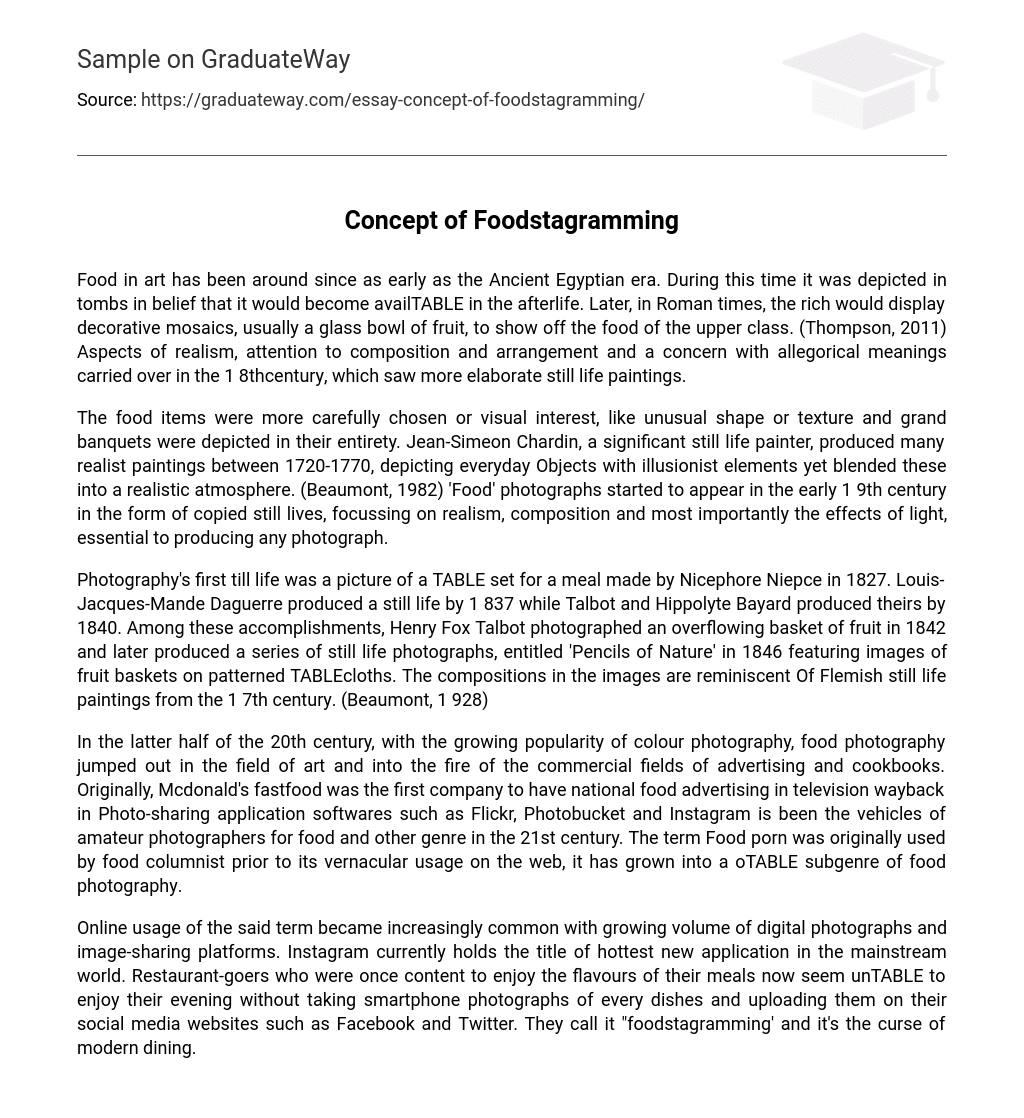Ancient Egyptians portrayed food in their tombs, believing that it would be accessible in the afterlife. In Roman times, the wealthy showcased decorative mosaics, often featuring a glass fruit bowl, as a display of upper-class cuisine. These traditions of realism, composition, and allegorical representation continued into the 18th century, resulting in more intricate still life paintings.
The selection of food items in the paintings of Jean-Simeon Chardin during the period of 1720-1770 was done with careful consideration for visual interest, emphasizing unusual shapes or textures. His realistic paintings also included grand banquets in their entirety. In the early 19th century, photographs of food began to emerge, following the style of copied still life paintings. These photographs focused on realism, composition, and the effects of light, which were crucial in creating a successful photograph.
Photography’s first still life was a picture of a table set for a meal created by Nicephore Niepce in 1827. In 1837, Louis-Jacques-Mande Daguerre produced his own still life photograph, followed by Talbot and Hippolyte Bayard in 1840. In 1842, Henry Fox Talbot captured an overflowing basket of fruit and subsequently produced a series of still life photographs called ‘Pencils of Nature’ in 1846. These photographs showcased fruit baskets on patterned tablecloths and were reminiscent of 17th-century Flemish still life paintings. (Beaumont, 1928)
In the second half of the 20th century, as color photography became more popular, food photography emerged as both an art form and a commercial tool for advertising and cookbooks. Initially, Mcdonald’s fast food was the first company to nationally advertise food on television. In the 21st century, amateur photographers have used photo-sharing applications like Flickr, Photobucket, and Instagram to showcase food and other subjects. The term “Food porn” was initially used by food columnists before it became popular on the internet. It has since evolved into a specific subgenre of food photography.
With the rise in digital photographs and image-sharing platforms, the use of the term mentioned has become more prevalent online. In the mainstream world, Instagram is currently considered the hottest new application. Previously, restaurant patrons were satisfied with simply enjoying their meals, but now they cannot seem to enjoy their evening without taking smartphone photographs of every dish and sharing them on social media websites like Facebook and Twitter. This trend is referred to as “foodstagramming” and is viewed as a negative aspect of modern dining.





